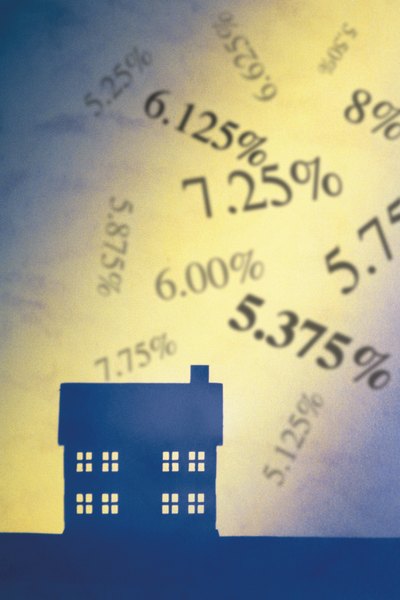Fisher Effect Formula
The Fisher effect formula describes a relationship between interest rates and inflation.
Comstock/Comstock/Getty Images
The "Fisher effect" formula attempts to show how an expectation of inflation influences both interest rates and purchasing power. Developed as part of an overall economic theory in 1930 by the mathematical economist Irving Fisher, the formula is so widely used in the fields of economics and finance today that many consider it a stylized fact -- a term used to describe observations and findings so consistent they are generally accepted as true. The Fisher effect formula not only plays an important role in academia and business, but it also has applications that can benefit you as an investor.
Tip
The formula used to calculate the Fisher Effect requires three important data parameters: the nominal rate of interest, the real rate of interest, and the inflation rate that is currently expected.
Components of the Formula
The Fisher effect formula assumes a one-year period and breaks down into three components: the nominal rate of interest, the real rate of interest and the expected rate of inflation. The nominal rate of interest is a percentage showing the price you pay for the use of money without taking inflation into account. The real rate of interest is a percentage that adjusts to remove the effects of inflation and, as a result, is a measure of “real” purchasing power. The expected rate of inflation is a percentage that varies according to current economic cycles.
Calculating the Formula
Calculating the Fisher effect is not difficult. The technical format of the formula is “Rnom = Rreal + E[I]” or nominal interest rate = real interest rate + expected rate of inflation. An easier way to calculate the formula and determine purchase power is to break the equation into two steps. Use the equation “Rnon – E[I] = Rreal” to get the real rate of inflation. Then determine the real purchase power of, say, $100 by multiplying 100 by Rreal and subtracting the amount from 100. If Rreal is 2 percent, the purchase power of $100 after one year will be only $98.
Short-term Applications
The Fisher effect has short-term practical applications you can use in everyday life. Because it is an estimate of purchasing power according to rates of inflation, you can use it to define the “real” rate of return on an investment in terms of what your profits will buy. For example, if you purchase a 12-month certificate of deposit for $5,000 at an interest rate of 0.94 percent and inflation remains constant, you will have $5,047.22 at the end of the year.
If inflation rises 2 percent over the course of the year, however, you actually lose money on the investment, as your profits and the purchasing power of your money decrease by $53.50 or 1.06 percent, leaving you with only $4,993.72 to spend: 2.0 – .94 = 1.06 5047.22 * 1.06 = 53.50 5047.22 – 53.50 = 4993.72
Long-term Significance
Knowing the real rate of interest is crucial for making good investment decisions. While using the Fisher effect in calculating short-term effects can prove both useful and interesting, results are even more significant when applying it in the long term. Compound calculations using your time frame for investing, initial investment amount, nominal interest rate and varying rates of inflation can be a tool for analyzing the potential of an investment and for helping you determine at what point in an economic cycle it makes sense to sell.
References
Resources
Writer Bio
Based in Green Bay, Wisc., Jackie Lohrey has been writing professionally since 2009. In addition to writing web content and training manuals for small business clients and nonprofit organizations, including ERA Realtors and the Bay Area Humane Society, Lohrey also works as a finance data analyst for a global business outsourcing company.

